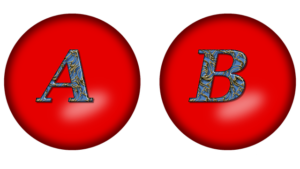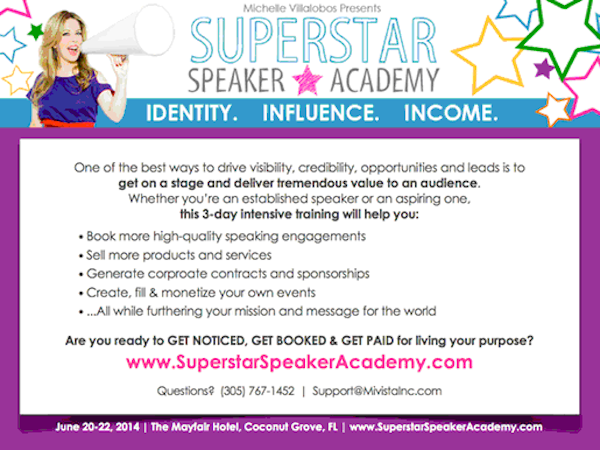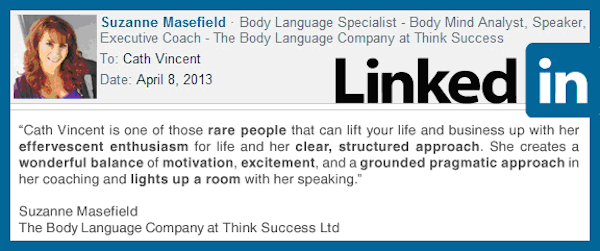Speakers, 6 Things You Need to Guarantee Closing a Sale
In fact, a good closer is closing throughout his sales pitch, and he’s doing it in such a way his prospect doesn’t even know he’s being closed. And that’s because a good closer genuinely cares about what he’s doing, and he cares that his buyers are getting value. So he closes by focusing on the value and the pride of ownership in his work—not “getting the money.” Craig Garber
A copywriter is a salesperson who uses the power of the written word to inspire a prospect to take action.
Every element of your copy plays an important role in this process,but what seals the deal is the close. Without it, your copy is worthless.
You may have fascinated your prospect with magnificent copy, but if you haven’t induced them to take action, your efforts were in vain.
Let’s start with a few words about what a close is, in terms of copywriting.
The close is the point in your copy when you direct your prospect towards making a purchase. It is the final step of the copywriting formula AIDA (Attention, Interest, Desire, Action). You prompt your prospect to take action when they are ready to buy.
You can close a deal in many different ways, some of which are more direct than others.
Here is an example of a direct approach to closing a deal from the website of the personal coach Anthony Robbins:
It all starts here. Click on any of the award-winning programs to take action now (or read on to learn more).
As you see, the author is telling the reader exactly what he needs to do: click here, read this or go there.
Here are the six things you need to guarantee a powerful close.
Table of Contents
1. Repeat Your Main Benefits
Your selling weapon is your main benefits. Why? Because the benefits give your prospect a reason to buy.
The whole body of your copy should convey your benefits, but highlighting them in the close boosts their power to convince.
As you probably know, prospects pay most attention to three hot spots in your copy: the headline, the opening, and the close. When you close your letter with your main benefits, you are giving your prospect a final “push” towards the purchase.
You are telling your prospect exactly what they will gain when using your product.
And what your potential customer really wants is the positive experience your benefits will bring into his life.
Like the American copywriter, Seth Czerepak writes in his article “3 Simple Steps for Selling Anything With Copywriting”
Great salesmanship comes from the ability to sell an experience.
2. Present Your Guarantee
Even if you have the best benefits to offer your prospect, he may not be ready to buy yet. Why should he believe that your product actually does what you are claiming? Your prospect is not prepared to take any unnecessary risks.
Here is when you should present your guarantee. With the guarantee you take the risk away from your prospect.
But the role of the guarantee in your sales letter doesn’t boil down only to reversing the risk.
Here is what American copywriter Christina Gillick says about the guarantee in her article “Writing a Guarantee That Converts”
The right guarantee builds relationships with your customers and inspires trust. It’s much more than a return policy with strings attached. The guarantee is possibly the strongest sales tool anyone can leverage. It tells the prospect that you stand behind and believe in your product. The guarantee is also the last final push to make a sale.
3. Ask for the Sale—often! Here is why
To close the deal, you must ask for the sale. And ask often.
Maybe this is the toughest part for most copywriters. To many, asking for the sale seems too aggressive. But remember, there is nothing wrong with it. You are here to do business, and your prospect knows this.
Don’t wait for your prospect to take the initiative and close the deal for you—instead be the one who leads the process.
Here is what the sales coach Wim says about asking for the sale in his article “Seven Reasons Why You Shouldn’t Be Afraid To Ask For The Deal”
Even when they’re highly interested and ready to buy, prospects will rarely ask for the sale themselves. If you’re not closing when the prospect is “hot,” their enthusiasm may disappear or the business will go to the competition who seizes the opportunity with both hands.
In the same article, the author points out more reasons to ask for the sale:
1. You will close deals faster
2. You build a relationship
3. You put things in motion
4. You give people the opportunity to do something for you
5. You bring clarity
Do you need more reasons to ask for the deal?
4. Tell Them Specifically What to Do Next
Another mistake many copywriters make is assuming the prospect knows what he needs to do next. The truth is he does not know.
Don’t leave it to his intuition. Instead, tell him exactly what action he needs to take. It’s important to be very specific. Telling your potential customer what to do doesn’t mean you can simply ask him to “buy now.” That’s the final step. Maybe your prospect is not ready to take that step just yet. Maybe he needs more information before he makes a decision to buy. Show him how he can get his hands on more information. 0
Maybe he needs more proof. Tell him where he can find it. And so on, until all of your prospect’s objections are overcome and is ready to buy. Then tell him how to take the final step.
Marketing expert Joe Garcia talks about this essential part of copywriting in his series “3 Power Tips to Super Charge Your Ads”
One of the primary tenets of effective marketing is to make every aspect of doing business with you as clear and as easy to understand as possible. While some of your prospects may figure out what the next action step is, many more won’t. They won’t even think about it. They will just drop your marketing piece and move on . . . to your competitor.
By telling your prospect exactly what action to take next, you remove all doubt and confusion.
5. Six Ways to Finish Strong With Your P.S.
The P.S. is an effective way to finish a sales letter. Often the P.S. is the final push to making a sale. That’s why it should be as powerful as possible.
Copywriter Jeff Rutowski offers the following six ways to use a P.S. in your sales letter in his article “6 Ways To Use P.S. In Your Sales Letter”
1. Motivate your prospect to take action
Make it clear why your prospect should take action.
Example: Do you want to master the craft of public speaking? Sign up for our next course!
2. Reinforce your offer
You have already presented your offer in the body text, but you can make it even more appealing in your P.S.
Example: Take your speaking career to the next level!
3. Emphasize or introduce premiums or bonuses
Introduce a bonus or make another promise. For example, you can offer a giveaway or a coupon if your prospect acts immediately.
Example: Call me today and get your discount coupon!
4. State or restate the price or terms of your offer
In your P.S. you can highlight an important part of your offer—the benefits of your product, the value-for-money price, your unique selling point, or whatever the strongest aspect of your offer is.
Example: Our online courses are completely tailored to your needs.
5. Present a surprise benefit
Surprise your prospect with an extra benefit. Make a promise he will not expect.
Example: In our speaking course you will not only learn public speaking, you will become a master at influencing others.
6. Highlight your guarantee
As we mentioned earlier, with your guarantee you assure your prospect that he has made the right decision. In your P.S., you should leave him in no doubt that there is nothing to lose by him accepting your offer now!
Example: If you are not 100% satisfied with our product, we will return 100% of your money.
6. Use Sidebars to Enhance the Close
Sidebars are a great tool to enhance your close. Jon Kranz gives the following definition of a sidebar in his article “A Dictionary of Common Copywriting Terms”
In an article or in a more substantial marketing piece, such as a long brochure, it’s a vertical stretch of copy set apart of the main body of text, usually with its own headline and often with a special graphic treatment. The sidebar is often used to present testimonials, brief case studies, or subordinate features and benefits.
Sidebars are catchy, because they stand out from the other content in the copy.
Here are three ways you can use sidebars in your sales letter:
1. For comparisons
A common use of sidebars is for “before-after” comparisons. By showing side by side the current situation of your prospect vs. his situation after using your product or service, you help him understand his needs and desires.
Example:

Source: http://tyhowardseminars.com/
2. To present features and/or benefits
Sidebars are a good way to stress in a more visual way the features and benefits of your product. For example:
3. To place your testimonials
Testimonials or any other kind of social proof makes your offer much more believable, and therefore they should stand out in your copy. For example:
Source: http://wakeupyourwow.com
How to Make These Seven Elements Work for You
What makes a great close is really simple and straightforward. All you do is apply each of the six elements we discussed:
1.Repeat your main benefits
2. Present your guarantee
3. Ask for the sale—often! Here is why.
4. Tell them specifically what to do next
5. Six ways to finish strong with your P.S.
6. Use sidebars to enhance the close.
So there you have it. Why not take a look through some of our professional freelance Copywriters in the USA.
About the Author

Celine Horan offers her copywriting services to the Professional Speaking industry. Help Professional Speakers write good copy for themselves AND grow as a Toastmaster, wife and friend.





